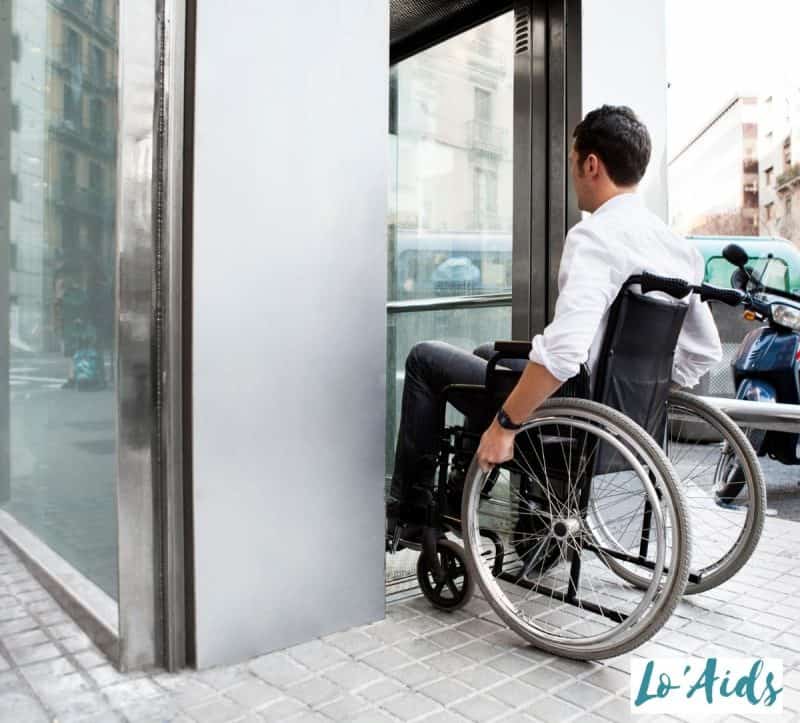Navigating The Elizabeth Line: A Wheelchair User's Perspective

Table of Contents
Station Accessibility on the Elizabeth Line
Step-free access is a key factor in determining the usability of any station, and the Elizabeth Line boasts a high level of accessibility across many of its stations. However, the experience isn't uniform across the entire network. This section details the accessibility features of various stations, offering a realistic picture for wheelchair users.
-
Stations with Excellent Accessibility: Many stations, such as Canary Wharf, Paddington, and Tottenham Court Road, offer excellent wheelchair accessibility. Key features include:
- Wide platforms, minimizing the risk of falls.
- Well-maintained and spacious lifts, providing smooth access between platforms and concourses.
- Clearly marked and well-maintained tactile paving for visually impaired passengers.
- Accessible toilets, equipped with appropriate grab rails and ample space.
-
Stations with Some Accessibility Limitations: While the majority of stations aim for step-free access, some present minor challenges:
- Lift Maintenance: Occasional lift maintenance can cause temporary disruptions. Real-time updates on the TfL website or app are crucial to check status before travel.
- Narrow Doorways: In some older sections of certain stations, doorways might be narrower than ideal for larger wheelchairs.
- Ramp Slopes: The gradient of some ramps might prove challenging for some users.
-
Planned Improvements: Transport for London (TfL) is continuously working to improve accessibility across the network. Checking the TfL website for updates on ongoing and planned improvements is recommended.
Using Trains on the Elizabeth Line in a Wheelchair
The Elizabeth Line trains themselves are designed with wheelchair users in mind, but understanding their features beforehand ensures a smoother journey.
-
Wheelchair Spaces: Each train has designated wheelchair spaces, typically located near the doors for easier boarding and disembarking. These spaces are generally spacious and offer adequate room for a wheelchair and a companion.
-
Boarding and Disembarking: Boarding and alighting are generally straightforward, thanks to the level boarding system. However, during busy periods, assistance from train staff might be necessary.
-
Space and Comfort: The wheelchair spaces provide sufficient legroom and offer a comfortable journey, though longer journeys may necessitate breaks.
-
Assistance from Train Staff: Train staff are generally helpful and willing to assist with boarding and disembarking if needed. However, it's always advisable to inform staff of your requirements beforehand if possible, particularly for assistance with luggage.
Navigation and Assistance on the Elizabeth Line
Effective navigation is paramount for a seamless journey. The Elizabeth Line provides various assistance options for wheelchair users.
-
Pre-booking Assistance: While not always necessary for shorter journeys, pre-booking assistance is advisable for complex routes or during peak times. Contact TfL directly to arrange this.
-
Finding Staff for Help: Station staff are generally readily available to assist with wayfinding, lift operation, or any other accessibility-related issues. Look for staff in high-visibility jackets or approach information desks.
-
Accessibility of Wayfinding and Signage: Signage throughout the stations is generally clear and easy to understand, with tactile paving guiding users to platforms and exits. However, in some areas, improved signage could enhance the experience further.
-
Apps and Websites: The TfL website and app provide real-time information on service disruptions, accessibility features of individual stations, and journey planning tools.
Dealing with Unexpected Issues
Despite the best planning, unexpected issues can arise.
- Lift Malfunctions: In the event of a lift malfunction, inform station staff immediately. They will provide alternative routes or transport arrangements.
- Delays or Disruptions: Check the TfL website or app regularly for updates on service delays or disruptions. Plan for extra travel time, especially during peak hours.
- Reporting Accessibility Issues: If you encounter any accessibility problems, report them to TfL using their website, app, or by contacting customer service directly.
Conclusion
Navigating the Elizabeth Line as a wheelchair user presents a mixed experience. While significant effort has been made to ensure accessibility, areas for improvement still exist. The majority of stations offer excellent step-free access and the trains themselves are well-equipped for wheelchair users. However, occasional lift maintenance, potentially narrow doorways in some older parts of stations, and the need for occasionally improved wayfinding highlight areas requiring ongoing attention. Accessible public transport, like the Elizabeth Line, is vital for an inclusive city, and continuous improvement is key. Share your experiences and help improve accessibility on the Elizabeth Line for all wheelchair users! Use the hashtag #ElizabethLineAccessibility to share your feedback and contribute to a more inclusive transport network.

Featured Posts
-
 Wynne Evanss Go Compare Future Uncertain After Strictly Scandal
May 10, 2025
Wynne Evanss Go Compare Future Uncertain After Strictly Scandal
May 10, 2025 -
 Details Emerge In Racist Stabbing Death Of Man By Woman
May 10, 2025
Details Emerge In Racist Stabbing Death Of Man By Woman
May 10, 2025 -
 Jeanine Pirro A Closer Look At Her Legal Career Education And Wealth
May 10, 2025
Jeanine Pirro A Closer Look At Her Legal Career Education And Wealth
May 10, 2025 -
 Frantsiya Polsha Podpisanie Vazhnogo Dogovora Zayavlenie Unian
May 10, 2025
Frantsiya Polsha Podpisanie Vazhnogo Dogovora Zayavlenie Unian
May 10, 2025 -
 Vegas Golden Nayts Vyigryvayut U Minnesoty V Overtayme Pley Off
May 10, 2025
Vegas Golden Nayts Vyigryvayut U Minnesoty V Overtayme Pley Off
May 10, 2025
